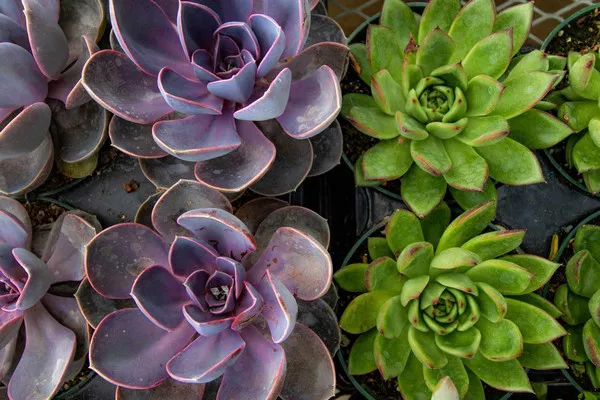Succulents have gained immense popularity in recent years, thanks to their unique and captivating beauty. These desert plants are known for their ability to store water in their fleshy leaves and stems, making them well-suited for arid conditions. To ensure the health and vitality of your succulents, it is crucial to select the right type of soil. In this article, we will explore the importance of soil for succulents and provide a comprehensive guide to choosing the ideal soil composition.
Understanding the Needs of Succulents
Before delving into the specifics of soil selection, it is essential to understand the basic needs of succulent plants. Succulents are adapted to survive in arid environments, where water is scarce and the soil is often sandy or rocky. These plants have evolved to store water in their tissues, enabling them to withstand extended periods of drought.
The unique water storage capabilities of succulents make them highly susceptible to root rot and other issues caused by excessive moisture. To prevent these problems, it is crucial to provide well-draining soil that allows excess water to escape quickly, preventing the roots from becoming waterlogged.
The Qualities of Ideal Soil for Succulents
When choosing soil for succulents, there are several key qualities to consider:
Well-Draining: Succulents require soil that allows water to drain freely, ensuring that excess moisture does not accumulate around their roots. This prevents the risk of root rot and promotes healthy growth. A well-draining soil composition ensures that water moves through the soil quickly, leaving the roots only slightly moist after watering.
Aeration: Adequate aeration is crucial for succulents, as it allows oxygen to reach the roots. Well-aerated soil prevents the roots from suffocating and helps maintain a healthy root system. Air pockets in the soil allow for gas exchange, facilitating root respiration.
Nutrient Content: While succulents are adapted to thrive in nutrient-poor environments, they still require some essential nutrients for growth. The soil should contain a balanced nutrient composition to provide the necessary elements without being excessively rich. A soil mix specifically formulated for succulents can help ensure the right nutrient balance.
pH Level: Succulents generally prefer slightly acidic to neutral pH levels. The ideal pH range for most succulents is between 6.0 and 7.0. A pH test kit can help determine the acidity or alkalinity of the soil and ensure it is within the appropriate range for optimal succulent growth.
Recommended Soil Mix for Succulents
To create the ideal soil mix for succulents, a combination of different components is recommended. Here is a basic recipe for a well-draining succulent soil mix:
Coarse Sand or Perlite: Adding coarse sand or perlite to the soil mix improves drainage and prevents water from pooling around the roots. These materials create air pockets and help maintain a loose soil structure. Aim to include about 50% coarse sand or perlite in the soil mix.
Potting Soil or Organic Matter: Including potting soil or organic matter in the soil mix helps provide some nutrients and retains moisture without compromising drainage. Choose a well-draining potting soil or mix your own by combining equal parts of regular potting soil and coarse sand or perlite.
Pumice or Volcanic Rock: Adding pumice or volcanic rock to the soil mix further enhances drainage and aeration. These porous materials improve water movement through the soil and prevent compaction. Aim to include about 25% pumice or volcanic rock in the soil mix.
Optional: Compost or Worm Castings: Adding a small amount of compost or worm castings to the soil mix can provide additional organic matter and nutrients. However, it is important not to overdo it, as succulents prefer soil that is not overly rich in nutrients. Aim to include about 10% compost or worm castings in the soil mix.
Preparing and Using the Soil Mix
Once you have gathered the necessary components, follow these steps to prepare and use the succulent soil mix:
Thoroughly mix the components: Combine the coarse sand or perlite, potting soil or organic matter, pumice or volcanic rock, and compost or worm castings (if desired) in a large container. Mix the components thoroughly to ensure an even distribution.
Ensure proper sanitation: It is essential to use sterilized components to prevent the introduction of pests or diseases into the soil mix. If using garden soil, consider sterilizing it by baking it in the oven at a low temperature for a period of time.
Potting your succulents: When potting your succulents, choose containers with drainage holes to allow excess water to escape. Fill the pots with the prepared soil mix, leaving some space at the top for watering. Gently place the succulents in the soil, ensuring the roots are covered and the plants are stable.
Watering and Maintenance: After potting, water the succulents lightly, allowing the soil to dry out between waterings. Avoid overwatering, as this can lead to root rot. Monitor the moisture levels and adjust your watering frequency based on the needs of each succulent species.
Conclusion
Selecting the right soil for succulents is vital for their overall health and well-being. By choosing a well-draining soil mix that promotes proper aeration, nutrient balance, and pH level, you can provide an optimal growing environment for your succulents. Remember to use components such as coarse sand, perlite, potting soil, pumice, and compost in the appropriate proportions to create a soil mix that meets the specific needs of your succulents. With the right soil and proper care, your succulents will thrive and bring beauty to your indoor or outdoor space.


